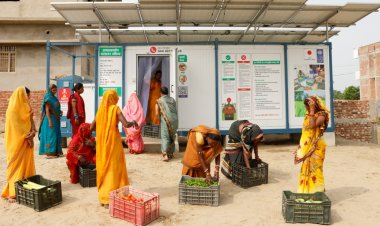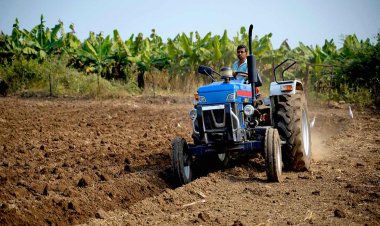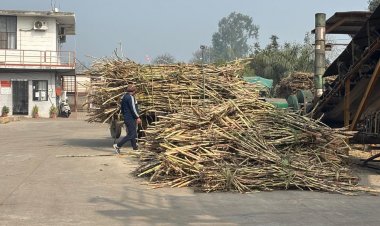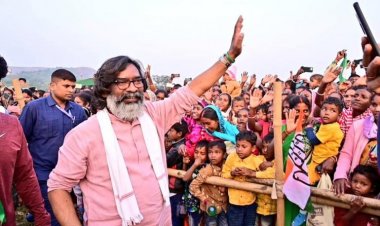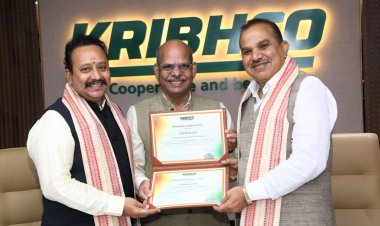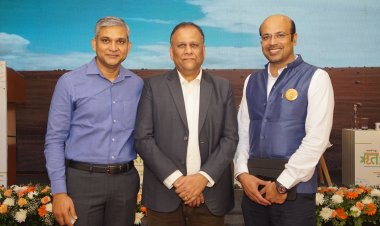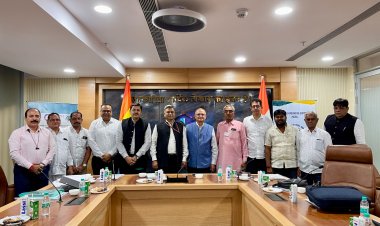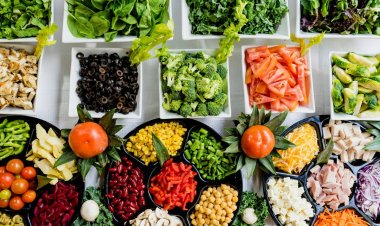Did we expect too much for agriculture in the budget?
Ms. Sitharaman did emphasise the importance of agriculture in the beginning of her speech. Agriculture (productivity & resilience) was listed as the first priority among the nine identified priorities. I would have loved to see sustainability and farmers’ prosperity as two more key words. They were sadly missing.
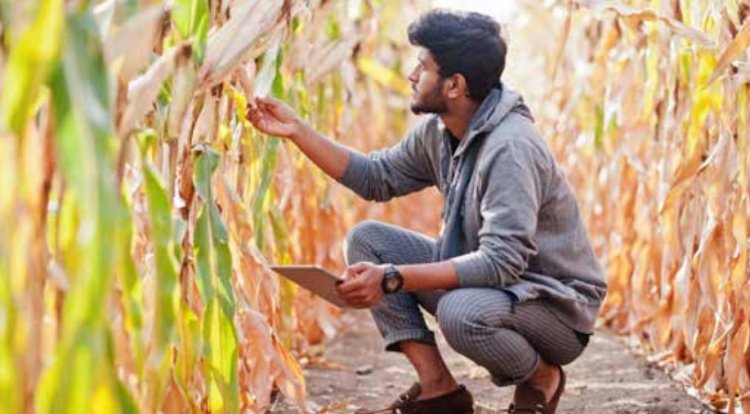
First, a caveat: Agriculture is too vast and complex a sector to be viewed only from the point of view of budget announcements and financial provisions. Let me, for the time being, ignore the impact of monsoons on agriculture as a natural phenomenon. Let us focus on government policy and implementation of various programs.
A number of government policy issues influence agriculture: The important ones relate to (i) water: maintenance and timely supply of water from canal irrigation systems, ground water extraction, availability and tariffs of electricity for water pumps for agriculture (free, subsidised, differential), cost of diesel (tractors, pumps in non- electrified areas) (ii) Fertilisers: availability, price (subsidy regime), availability of organic manure and policy regarding its price and distribution (iii) Price: Minimum Support Price and procurement efficiencies in different producing regions. Intervention price policy for non-MSP crops. (iv) Price control measures: stock limits, export restrictions, duty free or concessional duty imports (v) Credit: adequacy, availability and cost(vi) Risk mitigation : effectiveness and coverage of insurance instruments, price risk mitigation strategies. The list can be longer. Suffice to say that there are many other policy decisions which impact farmers’ incomes and agriculture more than the budget. With this caveat, I proceed to comment on the budget from an agriculture/ farmer perspective.
Ms. Sitharaman did emphasise the importance of agriculture in the beginning of her speech. Agriculture (productivity & resilience) was listed as the first priority among the nine identified priorities. I would have loved to see sustainability and farmers’ prosperity as two more key words. They were sadly missing.
Let me examine the key announcements:
1.A comprehensive review of agricultural research and the setting up of a fund in a challenge mode makes private institutions eligible to access the fund. This has been a long overdue demand. It makes immense sense to broaden the R&D base. Many policy experts have been arguing for increasing the outlay for R&D in agriculture and allowing institutions other than ICAR to participate. The immediate criticism could be that corporates will dictate the research agenda. Hold that argument for a minute: what about digital interventions, use of technology for better soil ( fertility & moisture ) management at farm level, nutrition linkage with food, micro weather forecasting, bio technology interventions, watershed management experiments and so on? The only caution should be on setting up the research agenda. My priority would be ‘sustainably increasing the incomes of the farmers’. Having endorsed the idea strongly, let me point out that the allocation for Agri R&D in the budget is highly disappointing. A table later in the article has the numbers.
2.Mission for oilseeds and pulses: Another important initiative: India has struggled to increase the productivity of pulses and oilseeds. There have been earlier missions on pulses and oilseeds (ISOPOM). The pulses village program of 2010 with a tweaking of ISOPOM did make an impact . Production of pulses increased from a stagnant 14.5 Million tons in 2009 to 27.5 million tons in 2022 aided by an area increase from 23 million hectares to 31 miilion and a productivity increase from 630 kg/hectare to 892 kg/hectare. Area under irrigation for pulses remains at a low of 23%. India needs to increase its production of pulses given our protein requirements. Oilseeds will continue to worry food policy experts. The area under oilseeds did increase from 26 million hectares to 29 million during the same period. Productivity, however, increased only to 1292 kg/ha from 1100 kg/ha. Though production has marginally increased, India continues to import about 60% of its requirements. This import is of the order of 16 million tons against an ever increasing demand pegged at 29 million tons in 2022-23. The challenge will be to enhance production without diverting area from other crops (except maybe tobacco). The point to note is the absence of any ‘break through’ R&D in pulses and oilseeds. Will the focus on R&D bridge this gap?
3.Shrimp production & export: This is a scaling up of a successful experiment put on the ground by MPEDA and the fisheries departments of coastal states, in particular Andhra & Tamil Nadu. This is a good example of export market led production process resulting in higher gains for shrimp farmers and better export earnings for the country. This is a well-conceived and closely monitored production & processing chain. Care needs to be taken not to dilute any of the protocols put in place in the enthusiasm to scale up fast. Lessons learnt in coastal Andhra in aquaculture in the late 90’s need to be remembered.
4.Peri Urban Vegetable production clusters: The worry on food inflation, particularly vegetables , must have prompted this scheme. An earlier scheme on similar clusters did not yield spectacular results. Keeping production clusters close to urban consumption centres can ensure higher value capture through better market access and shorter value chains. Providing access to city markets through ‘farmers’ markets’ run by FPOs could be considered as a part of the scheme. Making available open urban spaces on notified days for farmers’ markets should be a part of the initiative.
5.Digital Public infrastructure. Farmers are yet to reap visible benefits from the many ‘versions’ of digital agriculture and Agri-stack. The way to approach this should be from a ‘farmers’ use’ perspective. Which service does he access and how easy can it become? Let us consider easier access to credit, better risk cover, better value capture in markets, timely & usable information on weather etc, as the primary ‘uses case’ scenario of digital public infrastructure. Building an Agri-stack for post event analysis is good for researchers, but farmers will demand digital access to services on time. This re-prioritisation is a must.
6.Natural farming: The proposal is to bring ‘one crore’ more farmers to the natural farming fold supported by certification and branding. Where will they be from? The obvious answer seems to be ‘rain fed areas’ . If that be so, what kind of incentives are planned? This is not clear. May be details will come from the Agriculture Ministry later. Both certification and branding are problematic. Certification can become a bureaucratic nightmare to farmers and branding is going to face immense challenges. Is ‘Natural’ going to be different from organic? What will be the differentiator? This needs serious thinking across disciplines. The main focus of natural farming should be a reduction in cost and increased biodiversity creating higher value for the farmer. This could, in addition, contribute to better incomes and nutrition. I would hope that this is not lost sight of. In any case, these farmers who have chosen not to use chemical fertilisers are deprived of incentives, while their counterparts elsewhere get free power and subsidised chemical fertilisers! If natural farming is to succeed, this policy needs a bold shift towards those who conserve natural resources!
7.A national cooperation policy: I understand that a report is already with the Government on a proposed National Cooperation policy. The Union Government must eschew any attempt at over-centralisation. The Farmer Producer Companies were encouraged under the provisions of the Companies Act after a prolonged consultation process. The constitutional amendments for the cooperative sector were intended to promote voluntary formation, democratic control, autonomous functioning and professional management. The policy should allow people to choose between a cooperative and any other collective ( FPO) without any bias from the Government. Most State governments have exhibited a tendency to ‘control’ (even interfere with) cooperatives leading to the destruction of their business acumen and voluntary character. FPOs were considered to be an answer to this. Going back to the same model either at the state or the central level will be counter-productive.
The budgetary provisions for agriculture and allied sectors are estimated at 1.52 lakh crores (as per the budget speech). This probably includes agriculture & farmers’ welfare, agricultural research, fisheries, dairy and animal husbandry, food processing and cooperation.
Note: the above adds up to 1.53 lakh crores. May be cooperation not included.
(MOAFW: Ministry of Agriculture & Farmers’ welfare, DARE: Dept of Agricultural Research & Education, AH&D: Dept of Animal Husbandry & Dairying, FPI: Food Processing )
The agriculture ministry’s budget has a significant increase in the allocation for PM ASHA. The allocation is Rs 6,437 crores for this scheme, indicating a strong price support mechanism for pulses, oilseeds, potatoes & onions. In fact, this is the major increase in MOAFW’s budget. In addition, there is an enhanced provision of Rs.10,000 crores for Price Stabilisation Fund in the Ministry of Consumer Affairs. Together one can see a combined effort to ensure that farmers get MSP for pulses etc., while some consumers, at least, will be protected from price rise through price stabilisation. The difficulty, however, will be when both schemes operate in different silos.
Overall, the budget is about productivity & resilience, and misses out farmers’ welfare and sustainability. Some ideas are new and welcome, but these are not necessarily backed up with allocations. Design and implementation of existing and new schemes will decide the success or failure. Governance , at the state level will be the game changer. It is time to draw up a comprehensive strategy for the sector, outside of the budget .
Does the tenor of the budget speech indicate the happy beginnings of a consultative process with states and stakeholder institutions to redraw the strategy for agriculture? I hope it does!
(The writer is Former Secretary Food & Agriculture, Former Chairman, NDDB)



 Join the RuralVoice whatsapp group
Join the RuralVoice whatsapp group

















